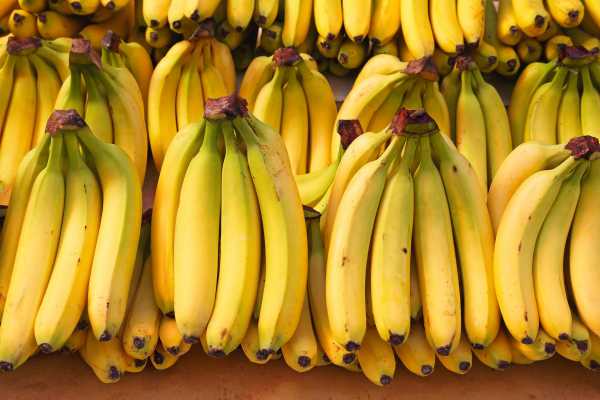America’s most popular fruit may be at risk of extinction, due to a fungus outbreak within the world’s banana crops.
Online publication Cracked spoke to a professor of plant pathology from the University of Florida, named Dr. Randy Ploetz, who initially discovered the fungus that is destroying banana crops. The Cavendish-killing fungus, which is known as tropical race 4, was discovered by the professor in 1989, and he thinks that there is no way of stopping the fruit extinction.
There are numerous reasons why concerns over the banana crisis have lead to the conclusion that extinction is inevitable, one of which is that it has happened before. From 1900 to the mid-1950s, the most popular banana in America was the Gros Michel banana. It was commonly sold, and even pictured in a fruit headdress worn by actress Carmen Miranda, but they are incredibly difficult to find today. Although they are not completely extinct, they are a very niche product.
The Gros Michel banana was destroyed by an earlier form of today’s pathogen, race 1. Race 1 required 50 years to diminish the world’s plantations, but once the devastation was completed it had caused the modern equivalent of $2 billion in damages. Dr Ploetz explained that the modern Cavendish banana replaced the Gros Michel due to its resistance to race 1. However, the professor claims that this time there is nothing that is resistant to TR4 that will be able to replace Cavendish.
There are also fears that the same thing could happen to other natural crops. Dr. Ploetz explains, “A disease that could really take the industrial world by surprise affects natural rubber, which is really, really important – airplane tires, for instance, are 100 percent natural rubber. Artificial rubbers are not as good quality. There’s a disease in tropical America that’s not found where most of the world’s rubber is produced, but if that one disease got over to Southeast Asia it could be disastrous. Virtually every crop grown in the tropical world has got a handful of diseases or insect pests that can cause great problems.”
Although this fungus outbreak is only affecting a particular type of banana, the Cavendish represents a huge 95% of the worldwide banana trade. TR4 is already widely spread across Asia, the Middle East and Africa, causing the United Nations to urge the banana-growing countries to increase their fungus-fighting actions. A huge 70% of the $9 billion banana industry’s produce comes from Latin America, which could have devastating effects for the trade of the country if TR4 begins to spread there, as researchers believe it will.
The spreading of the source that is killing the banana plants is occurring incredibly slowly, although it is inevitable. Dr Ploetz said, “It’s a soil-borne fungus and it takes a while for it to spread from plant to plant. So by the time you recognize that you have a problem, large portions of the plantation can be affected. It’s very hard to manage. It makes headlines after the horse is out of the barn, but by then it’s too late to do anything.”
Dr Ploetz also explained his concerns of how easily the fungus can spread. He said, “Our concern is that we know it can move from Southeast Asia all the way across the Indian Ocean. If it can move that far, it’s probable that it will eventually jump across the Atlantic to tropical America. When, we don’t know, but history has shown that it’s possible. Coming up with some kind of quarantine measure would be great, but I doubt it’s going to happen. There are quarantine laws in effect in various banana-producing countries in the Americas, but it’s such an insidious thing that it’s just a matter of time until this thing shows up somewhere.”
VIDEO:
THIS ARTICLE IS OFFERED UNDER CREATIVE COMMONS LICENSE. IT’S OKAY TO REPUBLISH IT ANYWHERE AS LONG AS ATTRIBUTION BIO IS INCLUDED AND ALL LINKS REMAIN INTACT.
IMAGE CREDIT:Baloncici / 123RF Stock Photo
Original source:http://truththeory.com/2017/01/23/bananas-quickly-quietly-becoming-extinct-devastating-effects/
